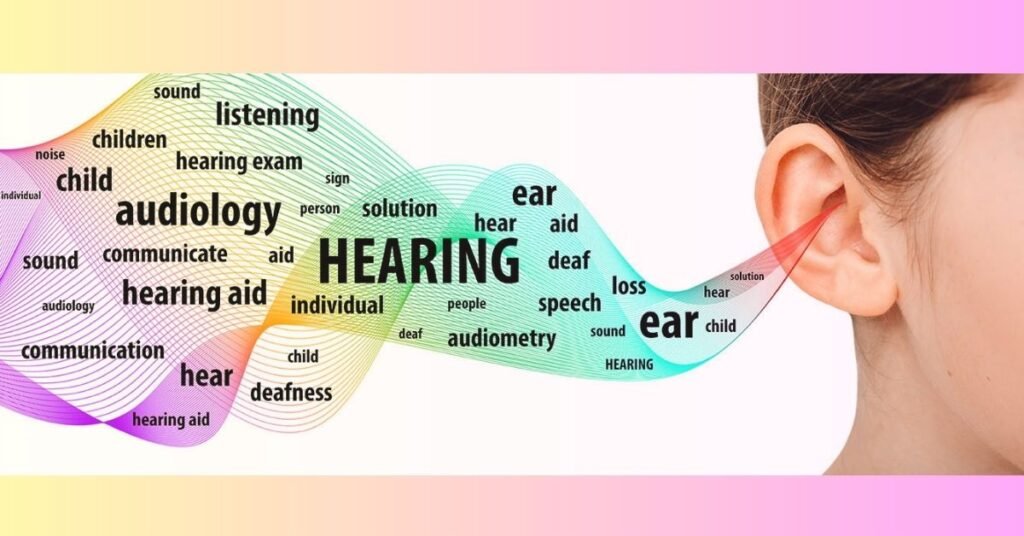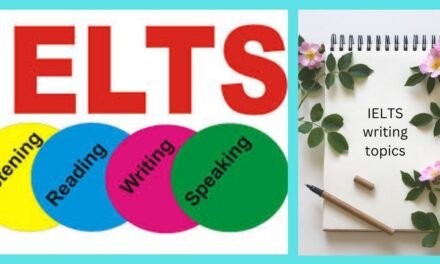You might know the words on paper, but when they string them together like a race car, it’s a whole new language! This struggle is more common than a rainy day in London, and it all boils down to mastering English listening.
English listening is more than just letting sounds tickle your eardrums. It’s about actively understanding the meaning behind those sounds, like catching a baseball – you focus, reach out, and snag the information being tossed your way.
But why can’t we always catch that information, especially from native speakers? Here’s the thing: conquering English listening comes with its own set of challenges. Don’t worry, friend, this post is here to equip you with the tools you need to overcome those hurdles and become a listening ninja! So, put on your detective hat, get ready to explore some winning tips, and unlock the world of fluent English listening!
English Listening Tips with problems and solutions
In this post, I described what listening is, who native speakers are, why we cannot listen to native speakers, what are some major problems, and what are its solution. Let’s get ready to start learning about English Listening Tips with problems & solutions with problems & solutions.
What is listening?
Listening in English refers to the active process of paying attention to and trying to understand spoken language. It’s more than just hearing sounds; it involves using your brain to interpret those sounds and grasp the meaning behind them. In listening all the given below things included.
- Hearing
This is the physical act of your ears picking up sound waves.

- Attention
You focus on the speaker and try to block out distractions.
- Interpretation
You use your knowledge of vocabulary, grammar, and context to understand the meaning of the spoken words.
- Response
You might respond verbally (by speaking), nonverbally (through body language), or by simply registering the information you heard.

Who are native speakers?
Native speakers are people who learn a language from a very young age, typically in their childhood environment. It’s often the language spoken by their parents or the main language of their home country. They develop an intuitive understanding of the language, including its grammar, slang, pronunciation, and natural flow – almost like a sixth sense for their native tongue.
Can we be native speakers?
While you can achieve fluency in another language, becoming a true native speaker is quite difficult. This is because native speakers acquire language naturally from a very young age, absorbing its nuances like breathing. They develop an unconscious understanding of things like slang, accents, and the natural flow of speech that can be challenging to replicate later in life. We cannot be a native speaker but we will be fluent or experts in any other language.
Problems for why we cannot listen to native speakers
Here is a brief description of the Problems for why we cannot listen to native speakers because It is a very crucial issue. So, let’s get started:
- Phrasal verbs:
Phrasal verbs are those sneaky little things where a verb teams up with a preposition (like “up”) or an adverb (like “out”) to create a whole new meaning. Native speakers love them because they add flavor and informality to their speech. The trouble is, that the meaning of the phrasal verb isn’t always obvious from the individual words. You might know “look” and “up” separately, but “look up” can mean to search for something or to improve. That’s why phrasal verbs can be a challenge for learners & it is the problem, we cannot listen to native speakers.
- Idioms:
Idioms are like secret handshakes in a language – expressions that don’t mean what the words literally say. Native speakers love using them naturally in conversation, making them sound colorful and familiar. For example, saying “it’s raining cats and dogs” doesn’t mean there’s a literal downpour of furry friends, but that it’s raining very heavily. Native speakers use it to shorten their any kind of speech or any other conversation. It is also a problem for us.
- Slangs:
Slang is like the informal, ever-evolving language of everyday life. It’s made up of words and phrases that might not be found in a dictionary, often with playful or creative meanings. Native speakers use slang to sound casual, connect with their peers, and express themselves in a way that feels fresh and current. For example, instead of saying “that’s excellent,” a native speaker might use slang like “that’s lit.”
- Vocabulary:
Vocabulary is the toolbox of words you have at your disposal. It includes all the words you understand and can use in speaking and writing. Native speakers have a vast vocabulary that allows them to express themselves precisely and creatively. They use the right word for the situation, from formal terms in professional settings to casual slang with friends. Their rich vocabulary helps them paint a clear picture with their words and understand the nuances of spoken and written communication.

- words synonyms & antonyms:
Synonyms and antonyms are like two sides of the same coin in the world of words. Synonyms are words with similar meanings, offering native speakers variety in their speech. For instance, “happy” and “joyful” both convey a positive feeling. Antonyms, on the other hand, are opposite words. Native speakers use antonyms to create contrast and emphasis. For example, saying “I felt happy, not sad” uses synonyms and antonyms to highlight the positive emotions.
- Fluency:
Fluency in English isn’t just knowing a bunch of words. It’s about using them effortlessly, like riding a bike. A fluent speaker can express themselves clearly and naturally, speaking at a comfortable pace and using grammar and vocabulary accurately. They can also understand spoken English easily, even when it’s fast or uses slang. Native speakers use English fluently without even thinking about it, allowing them to have smooth conversations and express themselves with confidence.
- Contractions:
Contractions are shortcuts! They’re formed by combining two words into one and using an apostrophe (‘) to mark where letters are left out. Native speakers use contractions all the time in casual speech to make their language flow more smoothly and sound more natural. For instance, “I have” becomes “I’ve” and “do not” becomes “don’t.”
- Reductions:
Reductions are like shortcuts native speakers take when speaking quickly. They shorten sounds or connect words together in ways that might not be written formally. Imagine “gonna” instead of “going to” or “wanna” for “want to.” These reductions make speech flow more smoothly but can be tricky for learners to catch at first.
- Hesitation:
Hesitation is a feeling of uncertainty or doubt that causes a pause or delay in speech, action, or decision-making. It’s like a little voice in your head saying “Wait a minute” before you move forward. Sometimes hesitation is caused by a lack of information, while other times it’s due to weighing different options or overcoming fear.
These are some major problems about why we cannot listen to native speakers and now we discuss its solution & how to overcome the problems.
- Stress:
Stress in English listening refers to how certain syllables in words and sentences are emphasized. It’s not just about volume, but also about pitch and length. Here’s how native speakers use stress:
Word Stress: One syllable in most English words is stressed, meaning it’s pronounced louder, higher in pitch, and held slightly longer than the others. This stress helps distinguish between words. For instance, “present” (gift) and “preSENT” (past tense verb) have different stresses on the first syllable, completely changing the meaning.
Sentence Stress: Not all words in a sentence carry equal weight. Native speakers stress certain words to convey the main idea or emphasize a particular point. Imagine saying “I DIDN’T take your pen” (emphasizing you weren’t the one who took it). Here, “DIDN’T” is stressed to show what you’re denying.
Solutions for how we listen to native speakers
While listening to native speakers can be a challenge, there are solutions to overcome these hurdles and improve your comprehension. Here’s a breakdown of the problems you mentioned, along with strategies to tackle them:
Problem: Phrasal Verbs
- Solution: Learn phrasal verbs in context. Don’t just memorize lists – focus on sentences, paragraphs, or short videos where they’re used naturally. Pay attention to the preposition’s role in meaning. Group phrasal verbs by topic (work, travel, etc.) and use flashcards with example sentences.
Problem: Idioms
- Solution: Immerse yourself in English! Read books, and articles, watch movies and shows, and pay attention to idioms. Underline or note them down, then look up their meaning and usage. There are also online resources dedicated to idioms with explanations and examples.
Problem: Slang
- Solution: Expose yourself to informal English – listen to music, watch shows with younger characters, and follow social media trends (beware of negativity!). Look for slang dictionaries or online resources that explain current slang terms.
Problem: Vocabulary
- Solution: Read extensively! Reading exposes you to a wide range of vocabulary in context. Use a dictionary or online tools to look up unfamiliar words and learn synonyms and antonyms. Utilize flashcards or apps to actively memorize new vocabulary.
Problem: Synonyms & Antonyms
- Solution: Pay attention to how synonyms and antonyms are used in different contexts. Take one word and use it in a different sense then a new word is created for a new sense. This trick will help you a lot. This will help you understand the subtle differences in their meanings and how they affect the overall message.
Problem: Fluency
- Solution: Practice speaking English as much as possible, even if it’s to yourself! Describe your day, narrate your activities, or discuss a topic that interests you in front of a mirror & with your home members, or with your friends or colleagues. Shadow speaking with native speakers is another great way to improve fluency.
Problem: Contractions
- Solution: Immerse yourself in casual English – watch interviews, listen to podcasts, and pay attention to how contractions are used naturally.
Problem: Reductions
- Solution: Start with slow, clear audio materials and gradually increase the speed as you improve. Focus on keywords and the overall message first, then pay more attention to reduced sounds as your comprehension gets better.
Problem: Hesitation
- Solution: When listening to native speakers, understand that hesitation is normal. They might be searching for the right word, formulating a thought, or simply taking a short pause. You can remove your hesitation by your courage in yourself. When you do not think that what people say you will speak what you want to speak & no one can interrupt you. So, produce courage and bravery and have faith in yourself, and then in God. All will be OK.
Problem: Stress
- Solution: Feeling stressed listening to English? Don’t worry! Focus on stressed syllables in words, and gradually build your listening skills with easier materials. Actively listen by taking notes and summarizing, find a quiet space, and boost your vocabulary to understand what you’re hearing better.
Conclusion
The journey to mastering English listening might seem daunting at first, but with the right approach, it can be an exciting adventure! Remember, even native speakers hesitate, use slang, and struggle with complex vocabulary sometimes. Don’t be discouraged by challenges – embrace them as opportunities to learn and grow.
By incorporating these English listening tips into your practice routine, you’ll be well on your way to catching information like a pro. Actively listen, find engaging materials that match your level, and break down listening tasks into manageable chunks. Utilize subtitles and transcripts to your advantage, and don’t be afraid to embrace repetition – it’s the key to mastering any skill. Most importantly, have fun with it! Explore different genres, sing along to your favorite English songs, and find ways to make learning enjoyable.
With dedication and consistent practice, you’ll be surprised at how quickly your English Listening Tips with problems & solutions improve. Remember, conquering English listening isn’t just about understanding the words – it’s about unlocking a whole new world of communication and connection. So, put on your listening hat, embrace these English Listening Tips with problems & solutions, and get ready to take your English fluency to the next level!










Excellent post
Howdy, I do think your website might be having brwser
compatibility issues. Whenever I look at your web site in Safari,it
looks fine however, if opening in I.E., it’s got some overlapping issues.
Other than that, great blog!
I’m thoroughly captivated with your deep insights and stellar way of expressing complex ideas. Your expertise clearly stands out in every piece you write. It’s clear that you put a lot of effort into researching your topics, and the results does not go unnoticed. We appreciate your efforts in sharing this valuable knowledge. Continue the excellent job!
Hello. splendid job. I did not anticipate this. This is a excellent story. Thanks!
Hello! I just would like to give a huge thumbs up for the great info you have here on this post. I will be coming back to your blog for more soon.
Loved this piece! I really learned a lot. For basement lowering and underpinning work, visit The Foundation Kings.
Great web site. A lot of helpful information here. I’m sending it to a few buddies ans additionally sharing in delicious. And obviously, thank you on your sweat!
I like this internet site because so much useful material on here : D.
I genuinely enjoy examining on this internet site, it has good articles. “One should die proudly when it is no longer possible to live proudly.” by Friedrich Wilhelm Nietzsche.